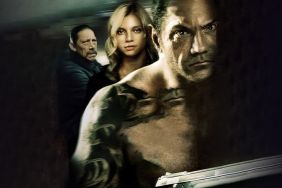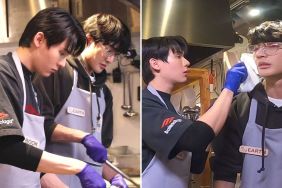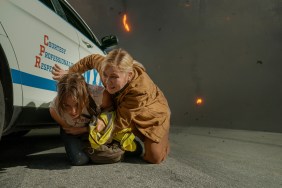
Hugo may be a film unlike any Martin Scorsese has ever directed, but it’s clearly close to his heart. Scorsese has been a frontrunner when it comes to restoring classic films, having recently made headlines with his immaculate restoration of Michael Powell and Emeric Pressburger’s The Red Shoes and now he’s gone all the way back to the beginning, using the films of special effects pioneer George Melies to guide the heart of Hugo, adapted from Brian Selznick’s children’s book by John Logan, the Oscar-nominated screenwriter of Scorsese’s The Aviator. With the pieces and passion clearly in place, the question is whether or not they all came together.
Opening in the early 1930s, Scorsese embraces CG landscapes and 3D camera movements as if he’s been using them his entire life as we swoop in on the clocks of a Parisian train station and are introduced to young Hugo (played by newcomer Asa Butterfield). Zooming through this 3D world, shots are edited together to present what would appear to be one seamless take, familiarizing the audience with the inner-workings of the train station and the gears and guts of the clocks Hugo tends to and peeks through for a bird’s eye view of the world.
You see, Hugo’s father (Jude Law) recently passed away and his drunken uncle (Ray Winstone), whose job it was to ensure the clocks in the train station kept the right time, took him in. However, Hugo’s uncle hasn’t been seen for some time and to keep from being thrown into an orphanage, Hugo does what he can to survive and conceal his existence by living inside the station walls and making sure the clocks are always on time.
However, it’s not all hiding and thieving croissants for Hugo. He has a secret; a mechanical man he and his father were trying to fix when he passed away and Hugo still hasn’t given up, believing something magical will happen once it finally comes to life. As it turns out, one particular shop in the station has caught his attention. It’s a toy shop where the owner (Ben Kingsley) makes and sells mechanical wind-up toys, perfect gadgets, sure to contain just the parts he needs.
Parts, though, seem to be the least of Hugo’s problems as only a heart-shaped key will ever finish the repair job. It’s a key he can’t forge, but it’s closer than he initially thinks.
As Hugo gets in trouble with the toy store owner and attempts to avoid the eccentric station inspector (Sacha Baron Cohen), he finds friendship in the toy store owner’s goddaughter Isabelle (Chloe Moretz). Isabelle would normally look right passed someone like Hugo, dirty and disheveled from his greasy living environments, but she sees adventure in him and that’s just what she’s been looking for.
The two quickly form a bond, Isabelle introducing Hugo to books and he introduces her to the movies, sneaking her into a showing of Harold Lloyd’s Safety Last!, which serves as just one of the inspirations from the past Scorsese relies on and evokes later in the film. Many such inspirations he hints at before homaging them as if to make sure the audience is never left behind.
In many ways Hugo feels like a cinematic history lesson as the plot thickens and Melies’s classic silent film A Trip to the Moon (1898) and it’s iconic image of a rocket ship wedged in the eye socket of the Man in the Moon plays a large role in the film’s plot. Melies becomes a focal point, detailing his work as a magician, his discovery of moving pictures at the hands of the Lumiere brothers and the construction of his glass-walled movie studio.
Scorsese has made a loving ode to classic cinema with a certain measure of whimsy, fantasy and small doses of comedy, but the magic that inspired the film doesn’t seem to have found its way fully into Logan’s adaptation of Selznick’s story. It’s a storybook feature and it feels as if it’s been bloated into feature length form in an attempt to wow the audience with 3D spectacle as Scorsese uses today’s technical advances to appropriately tell the story of a technical pioneer. Problem for me was that I wasn’t necessarily wowed or felt as if I was seeing something I hadn’t seen before, which I’m sure was the case when Melies was screening his film in the late 1800s.
As is most often the case, Robert Richardson’s cinematography is quite beautiful with a deep and rich color palette, although wide shots of Paris have a glossy, fake appearance as do other portions of the film as will happen with such heavily CG-ed environments.
Beyond the late cinematic history lesson of Melies, the one aspect of the film that stuck out more than any other was the performance by Ben Kingsley, who first appears as a weathered man that has given up on the world, but in an instant exhibits a sparkle of life in his eyes so recognizable it’s as if it was there the whole time.
However, Kingsley’s performance can’t distract from what is a rather flimsy story, which, at times, felt rushed as the history lesson and 3D imagery seemed to become more important than the story. Hugo is a film that after seeing it once I don’t need to see it again. I wasn’t wowed enough by the imagery or moved to any measure by the story. I appreciate Scorsese’s passion and he certainly found a story where he can pass that on to others, but in the end I felt the overall story gave way to that passion and some of the magic was lost.









